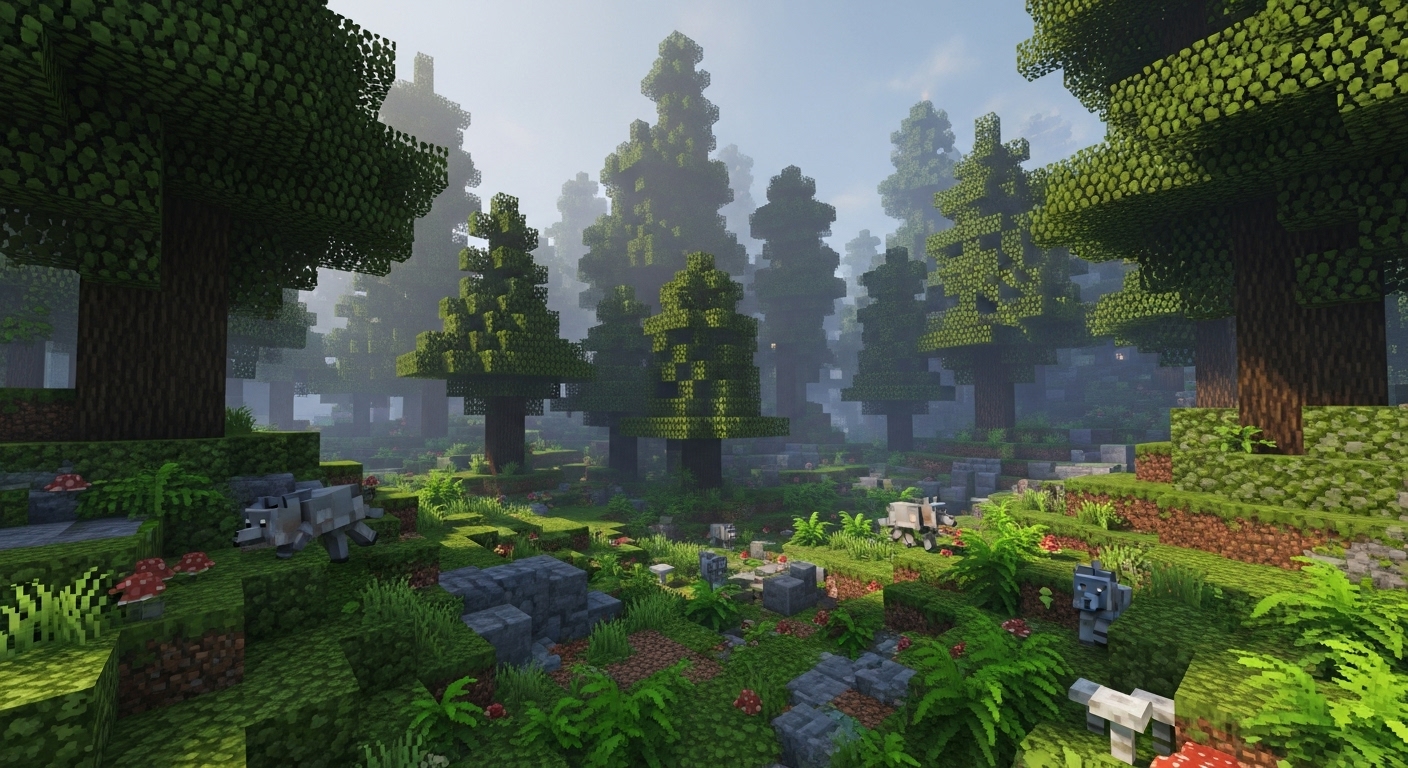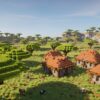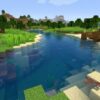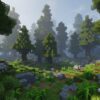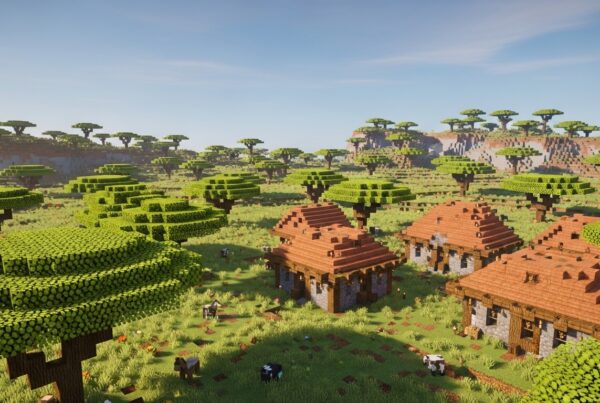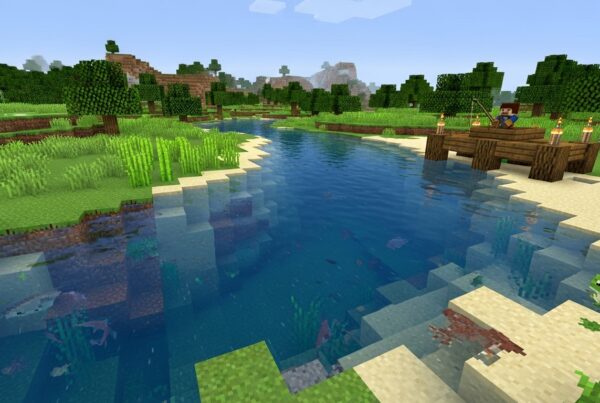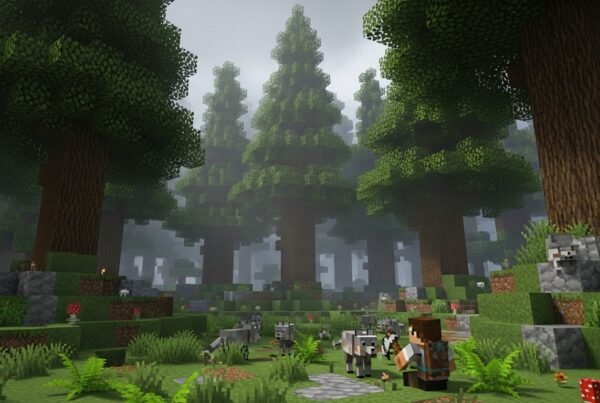The Old Growth Spruce Taiga biome in Minecraft (formerly known as the Mega Spruce Taiga) is one of the most stunning and atmospheric forest biomes in the game. Its colossal spruce trees, moss-covered boulders, and shaded forest floor create a mysterious, almost ancient environment that feels alive with natural detail.
In this guide, we’ll explore everything you need to know about the Old Growth Spruce Taiga — how to find it, what mobs and resources you’ll encounter, and the best ways to survive and build in this rare, forested paradise.
What Is the Old Growth Spruce Taiga Biome?
The Old Growth Spruce Taiga is a rare variant of the Taiga biome family, known for its 2×2 spruce trees, thick foliage, and abundant mossy cobblestone. The biome’s floor is typically covered in podzol, coarse dirt, and ferns, giving it a lush, ancient forest appearance.
The biome’s temperature is 0.25, with high downfall (0.8) — resulting in frequent rain and a cool, misty atmosphere. Snowfall begins around Y=160 ± 8, so higher elevations often feature a light dusting of snow.
Visually, the Old Growth Spruce Taiga stands out from its relatives, the Old Growth Pine Taiga and standard Taiga, for being denser, darker, and more humid, with a stronger wilderness aesthetic that appeals to survivalists and nature-focused builders alike.
How to Find an Old Growth Spruce Taiga
Because it’s a rare biome, players might need to explore extensively before finding one naturally. It typically appears in cold climate zones and can border mountains, groves, snowy taigas, or even dark forests.
Tips for locating it:
- Use the command /locate biome minecraft:old_growth_spruce_taiga (Java Edition).
- Look for giant spruce trees with 2×2 trunks and darker green leaves.
- Use online tools like Chunkbase Biome Finder to locate coordinates in your world seed.
- Spot visual cues like podzol ground, mossy cobblestone boulders, and ferns blanketing the landscape.
This biome is more likely to appear in large, high-altitude forest regions, often leading to breathtaking views when you climb to the canopy or nearby cliffs.
Visual Features and Terrain
The Old Growth Spruce Taiga biome feels wild and primeval. The canopy is thick, allowing little light to reach the forest floor, which creates both beauty and danger — mobs can spawn even during daylight hours under the dense shade.
Common Blocks and Features
- Spruce Logs and Leaves – abundant, ideal for rustic builds.
- Podzol – unique soil block allowing mushrooms to grow in daylight.
- Mossy Cobblestone Boulders – small rock formations scattered throughout the forest.
- Ferns and Grass – dense ground cover for a lush aesthetic.
- Giant Red and Brown Mushrooms – often spawn more frequently than in regular forests.
Biome Comparison Table
| Feature | Old Growth Spruce Taiga | Old Growth Pine Taiga | Regular Taiga |
|---|---|---|---|
| Tree Type | 2×2 Giant Spruce | 2×2 Giant Pine | Single Spruce |
| Ground Cover | Podzol, Mossy Cobblestone, Ferns | Podzol, Grass | Grass, Dirt |
| Light Level | Low | Medium | Medium |
| Common Mobs | Wolves, Foxes, Rabbits | Wolves, Foxes | Wolves, Rabbits |
| Rarity | Uncommon | Uncommon | Common |
Mobs Found in the Old Growth Spruce Taiga
Despite its serene look, the Old Growth Spruce Taiga can be teeming with life — and danger.
Passive Mobs
- Wolves – spawn frequently and can be tamed with bones to help in combat.
- Foxes – dart between trees and occasionally hold items like emeralds or berries.
- Rabbits – spawn rarely, typically in clearings.
Hostile Mobs
Due to the low light levels under the trees, zombies, skeletons, creepers, and spiders can spawn even during daytime.
- Endermen occasionally appear in open areas.
- Witches can spawn rarely at night.
- Slimes may appear underground in slime chunks below the biome.
Tip: Always keep torches or lanterns on hand — the thick canopy makes shadowed spots perfect for hostile mob spawns.
Resources and Blocks
The Old Growth Spruce Taiga offers several unique or highly valuable resources for survival and building.
Key Resources
- Spruce Wood: Ideal for cabins, bridges, and medieval builds.
- Podzol: Collect with a Silk Touch tool — allows mushroom farming in daylight.
- Mossy Cobblestone: Found naturally on boulders; great for ruins and nature builds.
- Sweet Berries: Found in patches; renewable food source.
- Mushrooms: Common and useful for stews and farming.
Pro Tip: Combine podzol and mossy cobblestone in your builds to blend structures seamlessly into the forest.
Survival and Building Tips
Living in the Old Growth Spruce Taiga is rewarding but demands smart planning.
Advantages
- Abundant wood, berries, and animals.
- Naturally scenic for immersive or nature-themed bases.
- Wolves provide early-game defense.
Disadvantages
- Dark terrain increases hostile mob activity.
- Dense foliage makes navigation and line-of-sight difficult.
- Limited open space for farming or large-scale builds.
Survival Strategies
- Light your base early: Place torches or hanging lanterns under trees to prevent mobs.
- Build elevated bases: Treehouses or platforms keep you safe from mobs and provide views.
- Use wolves strategically: Tame multiple for protection during nighttime travel.
- Establish clear paths: Clear ferns and underbrush to improve visibility.
Building Ideas
- Log cabins or mountain lodges that blend into the terrain.
- Hidden ruins or nature shrines using mossy cobblestone boulders.
- Lantern-lit walkways or tree bridges connecting elevated bases.
Structures and Exploration Opportunities
While villages are rare, the Old Growth Spruce Taiga can generate several unique structures:
- Trail Ruins – buried archaeological sites containing loot and pottery shards.
- Ruined Portals – partially collapsed Nether gateways surrounded by mossy cobblestone.
- Caves and Ravines – often rich in iron, coal, and dripstone formations.
- Lush Caves – frequently generate underneath this biome, making underground exploration more vibrant and green.
These structures make the biome ideal for players seeking adventure and resource diversity in one location.
Fun Facts and Trivia
- The biome was formerly named Mega Spruce Taiga before being renamed in Minecraft 1.19.
- Its biome ID is minecraft:old_growth_spruce_taiga. Older versions used giant_spruce_taiga.
- Podzol is unique to Old Growth and Mega Taiga variants.
- Wolves spawn more frequently here than in most other Overworld biomes.
- Because of its humidity and lush underground environment, lush caves almost always generate beneath this biome.
Conclusion
The Old Growth Spruce Taiga biome is one of Minecraft’s most enchanting natural regions — a mix of mystery, beauty, and survival challenge. With its towering spruce trees, mossy stones, and wolf packs roaming among the ferns, it’s an ideal spot for explorers, builders, and adventurers alike.
Whether you’re searching for rare blocks, setting up a forest retreat, or delving into nearby caves, this biome rewards those who take the time to understand and respect its wild nature.
For a similar experience, try exploring the Old Growth Pine Taiga, Taiga, or Snowy Taiga next — each offers a distinct twist on Minecraft’s northern forests.
